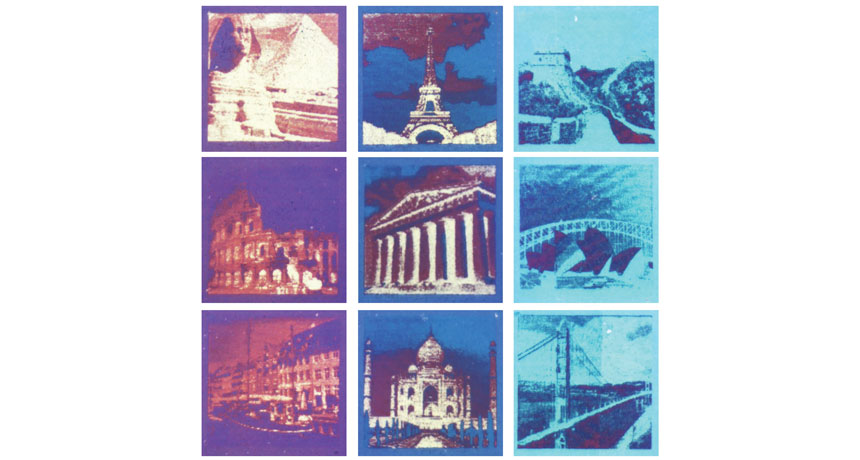New printer creates color by shaping nanostructures

Carving nanostructures with a laser creates long-lasting colors.
Researchers developed the new printing technique as an alternative to ink-based printing, in which colors fade with time. Aside from eternally vibrant art, the technique could lead to new types of color displays or improve security labels, the scientists report in the May 5 Science Advances.
Anders Kristensen of Technical University of Denmark in Kongens Lyngby and colleagues designed the laser printing technique so that it requires only three materials: plastic, germanium and a protective coating. In traditional ink-based printing, paper acts as the base; in the new method, plastic provides the foundation. The surface of the plastic is shaped so that it has lots of tiny pillars, one roughly every 200 nanometers. A thin film of the element germanium is then spread over the plastic. Heat from a laser melts the germanium on each pillar, morphing its shape and thickness. As a result, it reflects a specific color. The coating protects the shapes of the newly carved nanostructures.
Researchers have tried structure-based color printing before. But, Kristensen says, a film of germanium or similar material boosts the color contrast and the resolution. The new printer generates images at resolutions up to 127,000 dots per inch. Traditional laser printers, which use a fine powder called toner instead of ink, can reach only about 20,000 DPI, while ink-jet printers reach up to about 4,800 DPI.
The new printer can create extremely tiny images, too: only 50 by 50 micrometers. A single pixel of the latest Retina HD Display technology is 63 micrometers across. These kinds of displays have to be backlit for text and color to appear. But the new technique creates color without backlighting. So it could lead to new displays, including 3-D ones. 3-D displays would tap into the orientation, or polarization, of the structures’ reflected light. Polarization could also be used to hide information in the germanium film. That encrypted information could improve security seals such as watermarks.